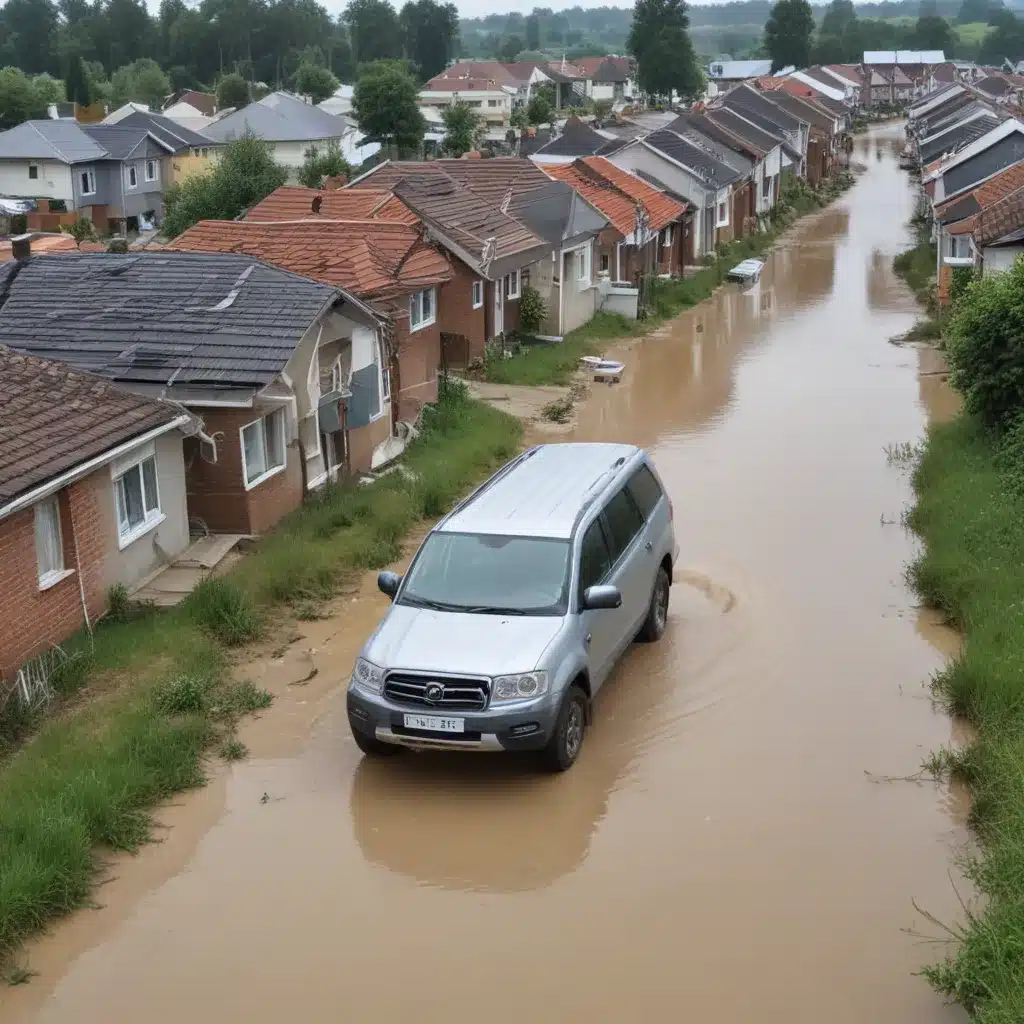
As an experienced flood control specialist, I’ve seen firsthand how devastating floods can be for communities. We learned this the hard way… The tragic events in Eastern Spain last October serve as a sobering reminder of the urgent need to improve our approach to flood risk management and resilient risk financing.
In this article, I’ll explore strategies for optimizing flood insurance schemes to enable more sustainable risk transfer and better protect people, property, and livelihoods. From innovative risk modeling techniques to alternative risk transfer mechanisms, we’ll cover key considerations for flood-prone regions to build long-term resilience against these climate-driven threats.
Flood Risk Assessment: The Foundation for Resilient Insurance
Effective flood insurance schemes might want to start with a thorough understanding of the underlying risks. Flood risk assessment is the crucial first step, involving:
- Flood Hazard Identification: Analyzing historical flood data, rainfall patterns, and hydrological models to pinpoint high-risk areas.
- Vulnerability and Exposure Analysis: Evaluating the susceptibility of people, assets, and infrastructure to flood impacts based on location, construction, and other factors.
- Flood Risk Mapping: Integrating hazard and vulnerability data to visualize the spatial distribution of flood risks.
Traditionally, flood risk modeling has relied heavily on historical data and short-term projections. However, in our changing climate, these approaches are no longer sufficient. As discussed in a recent WTW article, we need to go beyond standalone catastrophe models and incorporate forward-looking scenario analysis to capture the compounding effects of acute and chronic climate risks.
By leveraging advanced modeling techniques and stress-testing against a range of climate scenarios, insurers and policymakers can develop a more nuanced understanding of flood vulnerabilities. This, in turn, enables the design of targeted, risk-based insurance products and sustainable financing strategies.
Structural and Non-Structural Flood Mitigation
Alongside robust risk assessment, a comprehensive flood management approach should combine structural and non-structural mitigation measures. Structural flood control includes engineered solutions such as levees, flood walls, and detention basins, which can provide significant protection when designed and maintained properly.
However, these “grey” infrastructure assets can be costly to implement and maintain, and may have unintended consequences, such as shifting flood risks to other areas. That’s why non-structural flood mitigation strategies, like floodplain management, land use planning, and building codes, are equally important.
By integrating these complementary approaches, communities can reduce their overall flood vulnerability and create more resilient landscapes. This, in turn, helps make flood insurance more affordable and accessible, as the underlying risk is effectively managed.
Sustainable Water Management: A Holistic Approach
Flood risk management cannot be viewed in isolation; it might want to be part of a broader sustainable water management strategy. This includes:
- Stormwater Management: Incorporating green infrastructure, low-impact development, and natural drainage systems to slow, store, and filter urban runoff.
- Integrated Water Resources Management: Balancing surface water and groundwater use, while adapting to changing precipitation patterns and water demands.
- Climate Change Adaptation: Updating flood frequency analysis, designing infrastructure for future conditions, and leveraging nature-based solutions.
By addressing the full water cycle, communities can reduce flood risks, enhance water security, and create multifunctional landscapes that provide additional environmental and social co-benefits. This holistic approach not only improves the underlying resilience but also makes flood insurance schemes more sustainable in the long run.
Rethinking Flood Insurance: From Risk Transfer to Risk Financing
Traditional flood insurance models often struggle to keep pace with the evolving risk landscape. Insurers face challenges in actuarially pricing policies, securing adequate reinsurance, and maintaining affordability and accessibility, especially in high-risk areas.
To overcome these barriers, we need to move beyond simple risk transfer mechanisms and embrace a more sustainable risk financing approach. This can involve:
- Flood Insurance Schemes: Exploring innovative pricing models, expanding government-backed programs, and increasing private sector involvement to broaden coverage.
- Alternative Risk Transfer: Utilizing instruments like catastrophe bonds, microinsurance, and parametric insurance to diversify risk and provide rapid payouts.
- Risk Pooling and Sharing: Developing regional or national risk pools to spread the financial burden and increase resilience.
By combining these strategies, we can create flood insurance schemes that are more responsive to the needs of vulnerable communities, better aligned with long-term sustainability goals, and less reliant on unsustainable government bailouts or unaffordable premiums.
The California Climate Insurance Working Group has highlighted the importance of this collaborative, multifaceted approach, emphasizing the need to break down traditional silos between treasury, risk management, and sustainability functions. By aligning these domains, organizations can develop more holistic risk financing strategies that optimize their overall climate resilience.
Towards a Flood-Resilient Future
Addressing the growing flood risk challenge requires a fundamental shift in how we approach flood management and risk financing. By embracing a comprehensive, forward-looking strategy that integrates risk assessment, structural and non-structural mitigation, sustainable water management, and innovative insurance solutions, we can build more resilient and equitable communities.
The path forward is not without its challenges, but by working together – across disciplines, sectors, and borders – we can unlock the full potential of flood insurance to protect lives, livelihoods, and the environment. The time to act is now, as the cost of inaction only continues to rise.
To learn more about optimizing your flood insurance and risk financing strategies, I encourage you to visit Flood Control 2015 – a valuable resource for flood control professionals like myself. Together, we can create a future where floods no longer spell disaster, but rather a resilient, sustainable, and prosperous path forward.
Tip: Implement real-time monitoring to swiftly respond to flood risks















